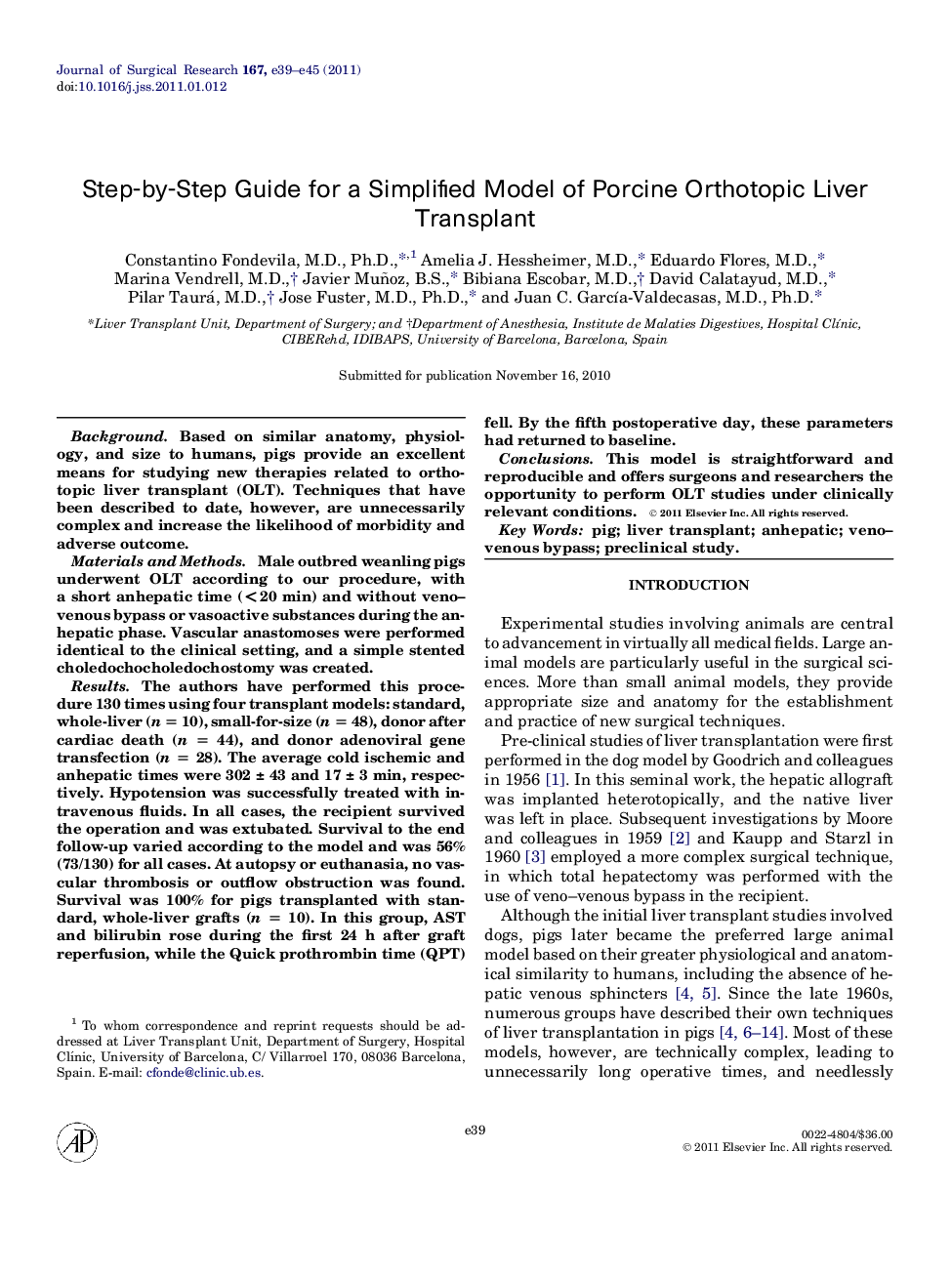| Article ID | Journal | Published Year | Pages | File Type |
|---|---|---|---|---|
| 4302841 | Journal of Surgical Research | 2011 | 7 Pages |
BackgroundBased on similar anatomy, physiology, and size to humans, pigs provide an excellent means for studying new therapies related to orthotopic liver transplant (OLT). Techniques that have been described to date, however, are unnecessarily complex and increase the likelihood of morbidity and adverse outcome.Materials and MethodsMale outbred weanling pigs underwent OLT according to our procedure, with a short anhepatic time (<20 min) and without veno–venous bypass or vasoactive substances during the anhepatic phase. Vascular anastomoses were performed identical to the clinical setting, and a simple stented choledochocholedochostomy was created.ResultsThe authors have performed this procedure 130 times using four transplant models: standard, whole-liver (n = 10), small-for-size (n = 48), donor after cardiac death (n = 44), and donor adenoviral gene transfection (n = 28). The average cold ischemic and anhepatic times were 302 ± 43 and 17 ± 3 min, respectively. Hypotension was successfully treated with intravenous fluids. In all cases, the recipient survived the operation and was extubated. Survival to the end follow-up varied according to the model and was 56% (73/130) for all cases. At autopsy or euthanasia, no vascular thrombosis or outflow obstruction was found. Survival was 100% for pigs transplanted with standard, whole-liver grafts (n = 10). In this group, AST and bilirubin rose during the first 24 h after graft reperfusion, while the Quick prothrombin time (QPT) fell. By the fifth postoperative day, these parameters had returned to baseline.ConclusionsThis model is straightforward and reproducible and offers surgeons and researchers the opportunity to perform OLT studies under clinically relevant conditions.
